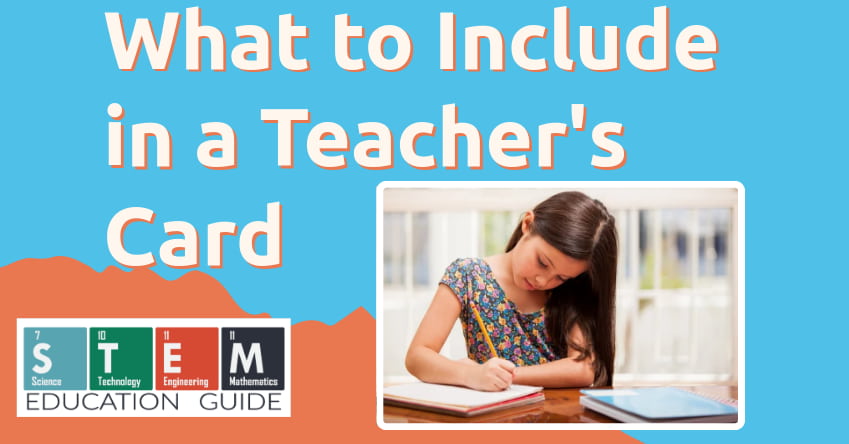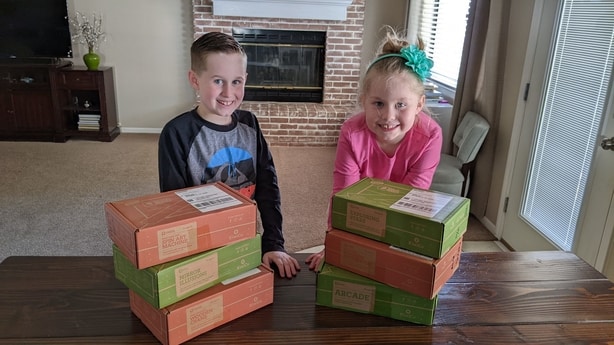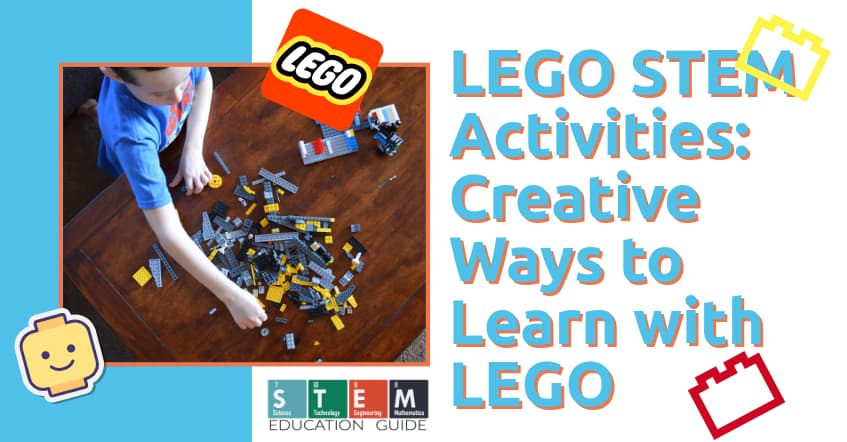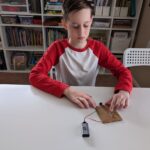Expressing gratitude is good for everyone. In fact, Teacher’s Cards have become a bit of a trend.
Gratitude begins with noticing what you have to be thankful for — if you have a school-age learner, chances are there is an adult in their life worth noticing. You can improve your own well-being by sharing your gratitude for that person, and, in doing so, you’ll make their day better, too. That’s a win-win.
If you want to thank a teacher for any reason and you’re not sure where to start, keep reading for some gratitude guidance.
Table of Contents
Reason to Express Gratitude to Teachers
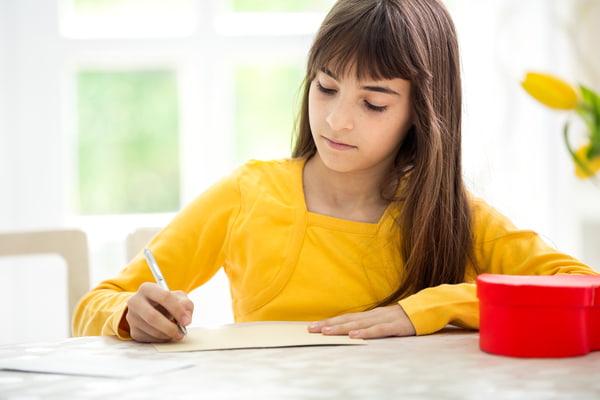
There are certain dates when cards are more or less expected, and these might vary a bit by culture and community. Usually, parents or students will give their teachers cards and gifts for major holidays as well as the end of the school year.
In the U.S., we also observe Teacher Appreciation Day in May, which falls on the Tuesday of Teacher Appreciation Week.
It can be especially thoughtful and impactful to write a note or send a card for a reason that falls outside of these norms. During the pandemic, I loved sending small, unexpected gifts and notes at times when I knew that school staff were particularly stressed and struggling.
Maybe it had been a while since the last day off, Covid cases were spiking, contract negotiations were stalled, or community members were disagreeing about policies.
If I knew that the people who guided and educated my child every day were experiencing adversity, I’d thank them for their hard work and care. Hopefully, that made the struggle feel a bit more worthwhile.
You might also want to thank a teacher when your learner achieves a major milestone, makes great progress in an academic area, had tons of fun on a field trip, or just says something particularly sweet about school.
Of course, it’s always welcome and heartwarming to send a note of thanks, “just because” (this is true for people who aren’t teachers, too). If you checked your mailbox today and someone had sent you a card expressing gratitude for something small, how would that make you feel?
How would it change your day?
STEM subscription boxes provide an opportunity to learn new things with the convenience of everything included and sent to your door every month. Please find the best STEM subscriptions in our article.
Types of Messages to Write to Teachers
Any good writing teacher will tell you: know your purpose and know your audience. The type of message you write depends on why you are writing it and what you know about the recipient.
If your note accompanies a gift (and depending on the occasion) it may be fine to keep it short. “Enjoy the cookies and have a restful break!” However, if the note is a standalone expression of gratitude, then you’ll need to add some depth.
Additionally, it matters how well you know the teacher. Even if the majority of community members celebrate a holiday, does the teacher? That might change your message. To get the right tone, think about conversations you’ve had in the past. Are they soft-spoken, sweet, and gentle? Are they serious and tough, or funny and loud?
Knowing a bit about your child’s educator or caregiver — their interests, their personality, their beliefs — can really help frame your message.
It’s also important to know yourself. Particularly if you are checking around on the internet for a list of pre-written messages (like those below), be sure to choose one that sounds authentic to you, or make the necessary edits to capture your own voice.
Examples of Messages
It can help to have some jumping-off points when coming up with the right message. First off, who’s writing it?
Here are some basic ideas for notes from parents:
- Thank you for being a wonderfully kind and caring teacher (you can change the adjectives to reflect the traits that you admire most)
- We so greatly appreciate everything you do, everything you give, and everything you are.
- Thanks so much for all that you do!
- My kid is having an awesome year — thank you for being the biggest part of that!
- You make learning meaningful and fun.
- What you do isn’t easy, but it is always appreciated.
- I’m so glad my child is in your class.
If your child is writing the thank you note, their own words are almost always best.
Still, they might appreciate some options for inspiration:
- I love it when we learn about ___________.
- You taught me that ______________.
- You make the school day more fun.
- I love being in your class.
- My favorite thing we did this year was ______________.
- Thank you for helping me with ________________.
Need more ideas? For a huge list of options for every setting and occasion, Hallmark has you covered.
LEGOs are a great way for kids to explore and let their imaginations run wild. Take a look at our article, LEGO STEM Activities: Creative Ways to Learn with LEGO.
Personalize the Message: Share Special Memories
One of the best ways to show true gratitude is by including specific, personal examples. It’s a little bit like the formula for a good apology — ”I’m sorry” only gets you so far, but clearly stating why you’re sorry shows that you really understand. Appreciation works the same way.
Amp up basic statements like, “I appreciate everything you do for our kids,” by sharing a small and special moment such as, “Addison was so happy when you shared her habitat project with the class,” or, “Jamar is always telling me how funny you are — he shared your hamster joke with me the other day.”
Whatever it is, the delight is in the details.
Humor: Lighten the Mood
Sometimes you just need to laugh, or to share laughter. Whether or not humor is the right choice depends on the context: what prompted you to write this note and, again, what do you know about the teacher? Answer those questions before you get funny.
Including humor might coincide with personalizing your message if you have a funny story to share. It’s also common to include quick quips about coffee and patience and working with kids.
If you want to go full-on joke, check out this list from We Are Teachers. Here’s one example:
Q: Why did the teacher wear sunglasses to school?
A: Because her kids were so bright!
It doesn’t have to be quite so cheesy if you’re funnier than I am, but many teachers enjoy a bit of cheese.
Maybe your own child has a joke to share. My favorite kid jokes are the most bewildering ones — they usually make me laugh the hardest. Kids Write Jokes has some great examples of the oddball humor that young people can come up with.
Consider Other Options
Maybe you’re not a wordsmith. Maybe you want to express gratitude so big, a card just won’t cut it. How else can you thank a teacher?
One year, my son’s class secretly made a collaborative Google slide deck for their teacher. Each student grabbed a slide and added their own notes of appreciation. They added colors and pictures to express themselves or to appeal to their teacher’s interests. This doubled as a great tech learning activity, too.
Brainstorm ways that the whole class or parents can surprise the teacher if you’re looking for a big wow factor.
Above all, the key word here is “consider.” Consider the context, consider the teacher, consider your own resources — just be considerate! It will show.
Conclusion on How to Write a Teacher’s Card
There are as many ways to thank a teacher as there are reasons to thank them. Whatever you choose, don’t miss an opportunity to express gratitude — appreciation goes a long way.
And if we haven’t said it before, thank you for reading this and other posts from STEM Education Guide. We’re so glad that you’ve trusted us to support your curiosity and your best endeavors to help kids learn.
See, didn’t that feel nice?
Find all the ways that STEM education is leading our children into the future in our article here.

